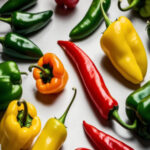For Beginners: A Step-by-Step Guide
Your Gardening journey doesn’t have to be complicated, with a few fundamental steps, you can cultivate a thriving garden. Welcome to Self Sufficiency Today.com. And today we will cover some basics to help you have the garden you’ve always wanted.


Knowing Your Zone
Understanding your USDA hardiness zone is crucial. This zone indicates the climate conditions in your area, specifically how hot and cold it gets, which directly impacts which plants will survive and thrive. You can easily find your zone by searching online using your zip code. For example, we are in zone 8b, if we planted an arctic fire dogwood (hardy in zones 2-7) it may not survive the summer heat. Similarly, a plant like a petunia, which is hardy in zones 10-11, may not survive winter in zone 8b.
Understand Plant Types
It’s important to know the differences between annuals, perennials, shrubs, and trees. Plants that survive only one growing season are called annuals, and they must be replanted each year. Annuals live for only one growing season, but they often boast more vibrant colors and longer blooming periods. Petunias and super bells are examples of annuals. Perennials regrow every spring, though they may have shorter blooming periods compared to annuals. Examples include daylilies, hostas, and salvias. Some plants, like lavender, can be perennials in warmer zones but annuals in cooler zones.
Shrubs are permanent elements in your garden and can be either deciduous (losing leaves in winter) or evergreen (keeping leaves year-round). They have woody stems and are smaller than trees.
Trees are self-explanatory, but it is important to remember that they start small and will grow over time.


Consider Your Watering System
Decide how you will water your garden, whether by hand with a hose or by installing an irrigation system. The best approach depends on your climate. In hot, dry areas, a drip system may be necessary, whereas hand watering can work well in cooler, wetter climates. Look at what other people in your area are doing to determine the best approach.
Avoid Overwatering
Overwatering is a very common mistake for new gardeners. It’s important to understand that plants often need less water than you think. A drought-resistant plant like an or succulents can be harmed by excessive watering.


Watch Out for Pests
Pests can quickly damage your plants. Look closely at your plants for signs of damage, such as chewed leaves. If you find signs of pests, take a leaf sample to your local garden center for diagnosis and advice. Common pests include bud worms, earwigs, snails, slugs, and white flies.
Your Plants are Hungry
Just like us, plants need food to survive. Different plants have different fertilizer requirements. Plants with more blooms and color, like supertunia vista bubblegums, typically require more fertilizer than those that do not. Keep a fertilizing schedule to make sure your plants get the food they need.


Keeping a Plant Journal
Keep a journal to record important plant information, including when to expect blooms, when and how to fertilize, and when to prune. This helps you track the needs of each plant and provides a reference for future care. It’s Trial and Error. Gardening is more of an art than a science. Don’t be discouraged by mistakes. They’re part of the learning process. Start by choosing a plant you love, planting it, and caring for it. If it doesn’t live, consider what went wrong and learn from your experience. Don’t worry about what you see on Youtube or blogs, the best way to learn is by getting outside and gardening.
The most important thing to remember is to get started, you never know, you just may have a green thumb after all!


